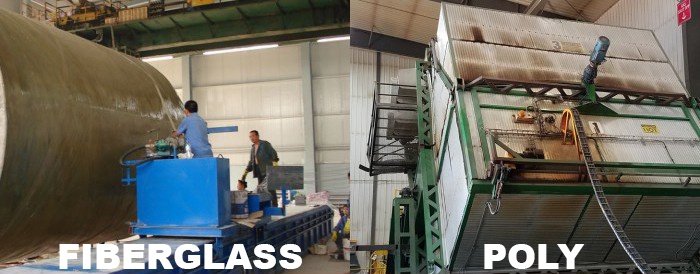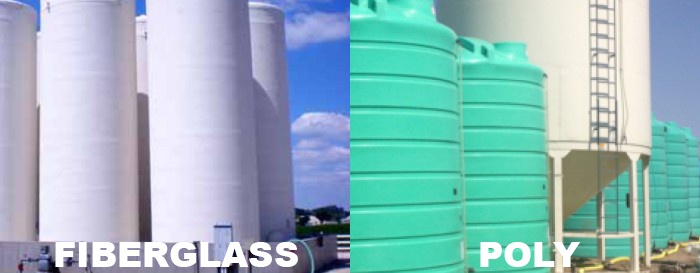Differences: Poly vs Fiberglass Chemical Storage Tanks
When considering storage solutions for chemicals, two options available are Polyethylene (poly) and fiberglass reinforced plastic (FRP). FRP tanks are available with numerous interior coatings and a structural layer comprised of chopped glass fiber and resin. Polyethylene storage tanks are either linear polyethylene or high-density crosslinked polyethylene.
When considering storage solutions for chemicals, two options available are Polyethylene (poly) and contact us. FRP tanks are available with numerous interior coatings and a structural layer comprised of chopped glass fiber and resin. Polyethylene storage tanks are either linear polyethylene or high-density crosslinked polyethylene. High-density crosslinked polyethylene, or XLPE, is a thermoset resin that is specifically engineered for critical applications like chemical storage. Both poly and FRP chemical storage tanks are available in a variety of sizes.
Let’s explore the differences between these two storage tank options.

1. Manufacturing
Fiberglass tanks are made by hand in production, which is labor intensive and creates opportunities for human error. Engineered production of polychemical storage tanks is controlled by an automated process. This eliminates the risk of human error.
2. Structure
Fiberglass storage tanks are not one-piece vessels. They contain seams that are prone to leaks. Polyethylene chemical storage tanks have a seamless one-piece structure that reduces this risk.
3. Maintenance
Because fiberglass tanks are prone to leaks at the seams, corrosion of the tank can develop over time. Tanks need to be carefully maintained and inspected, often requiring access to a confined space. Without seams and different internal coatings, and considering the corrosion resistance of polyethylene tanks, these tanks require much less maintenance and inspection.
4. Size
Due to the way fiberglass tanks are manufactured, they are available in larger sizes. When chemical storage tanks exceed 12,000 gallons, fiberglass is the only option.
5. Cost
In addition to the challenge of controlling quality, fiberglass is expensive. Resin-rich corrosion barriers designed specifically for common chemicals can add significantly to these costs. The cost per tank for poly tanks is much lower due to the lower cost of materials and the cost of the manufacturing process.

Now you have the information required to compare fiberglass reinforced plastic versus polyethylene chemical storage tank options for your application.
Need a customized solution to your chemical storage needs? Contact our storage tank specialist.
